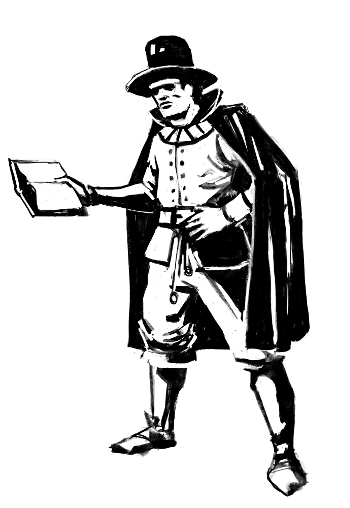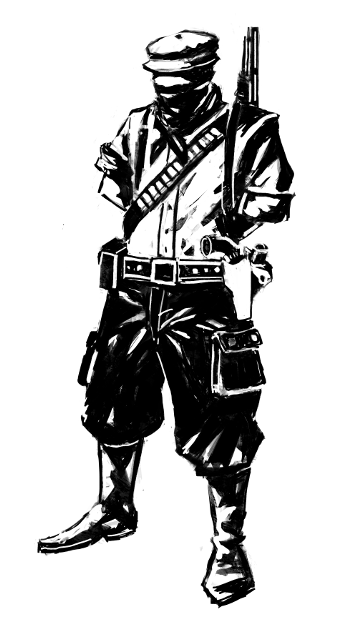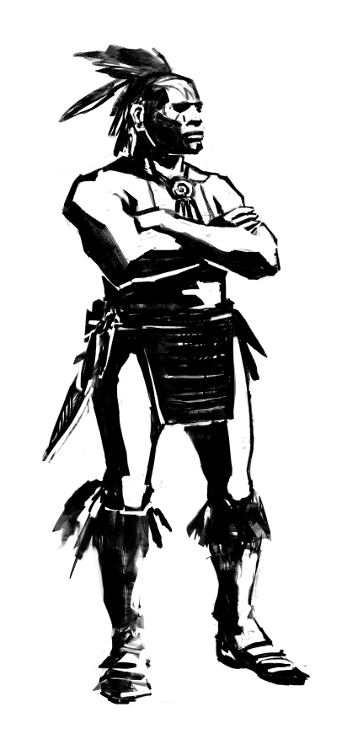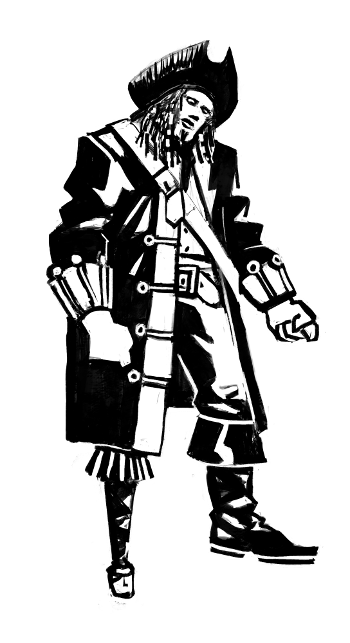Communes in History
For centuries, communes and communal forms of living have inspired people to organize themselves as a revolutionary counter-power to the centralized state.
Pirates, Peasants and Proletarians
- Issue #1
- Author
The idea of the commune has animated the radical imagination of rebels and revolutionaries for centuries. Examples of pre-capitalist societies characterized by communal ways of living were studied by radical theorists like Marx and Kropotkin, who did not necessarily consider these societies to be revolutionary—lacking the necessary emancipatory impetus—but who did approach these historical examples as a source of inspiration.
In the years since the Communards of Paris took over control of their city in 1871, many intentional communities and communal experiments have sprung up across the globe: from the Tolstoyan Life and Labor communes to la ZAD in northern France; from the 1919 Bavarian Republic to the Comunidad del Sur in 1950s Uruguay, from pirates in the 17th century to peasants in the 20th. What they all had in common was an ambition to create a new world in the shell of the old.
The aspiration of the participants in these communal experiments was not to set themselves apart from society, but rather to take their destiny in their own hands and build a new life in common. The countless examples of communal movements across space and time confirm that the commune-form is by no means a fringe, countercultural creation. On the contrary, the revolutionary ideas that propelled people to man the barricades in Paris, Barcelona and Kurdistan have been echoed in various ways by millions of protesters from Tahrir to Taksim, Syntagma to Zucotti Park.
Each and every commune in history has faced the reactionary forces of the state, and some have been more successful than others in defending themselves. The challenge ahead is to bundle these formerly isolated outbursts of energy, hope and power, and create an confederated web of communes. Such an international confederation would not only be able to withstand the destructive powers unleashed upon it by its antagonists; it would also be ready to warrant its long-term growth and survival.
Indigenous and Maroon Communes
Russian peasant communes
In his final years, Karl Marx dedicated himself in part to the study of Russian peasant communes, the obshchina, in whose practice of common land ownership he recognized a “starting point for a communist development.” In the Russian countryside, the common land was divided among the different households of a village community. This centuries-old tradition came to an end with the state-driven collectivization of land under Stalin in the 1930s.
For anarchist thinkers like Kropotkin and Bakunin, the obshchina were an important source of inspiration too. In Mutual Aid, Kropotkin reflects positively on the advantages of community organization at the local level as opposed to centralized state authority.
In olden times, when a king sent his vogt to a village, the peasants received him with flowers in one hand and arms in the other, and asked him which law he intended to apply: the one he found in the village, or the one he brought with him?
— Peter Kropotkin
Iroquois League
In the mid-12th century, a handful of indigenous nations in the American northwest entered into a confederation that has since become known as the Iroquois League. The Haudenosaunee society was characterized by a federative structure, with councils being the key decision-making organ at the longhouse, village, national and league levels. In the 17th century Francois le Mercier, a French Jesuit, described how deputies from each nation would hold a general assembly every year “to make their complaints and receive the necessary satisfaction in mutual gifts.”
The communal economic life of the five nations played an important role in their ability to live in peace; a metaphor often used for the federation was bringing everyone to live together in the same longhouse and eat from the same bowl.
— Peter Gelderloos
Men and women were considered equal, and there was a clear division of labor based on gender that allowed for a fluctuating balance of power depending on the issue at hand. Each level of society would have both women’s and men’s councils, and even though men would make the decisions at the “national level” regarding issues of war and peace, the women still held a veto power. The confederacy preserved the peace between the different Native American nations for many centuries.
Traditional African societies
Many traditional African societies were founded on a form of communalism. Some of the most important features of African communalism are the absence of classes and exploitative social relations; equality at the level of distribution of social produce; and strong family and kinship ties as the basis of social life.
In the words of Sam Mbah and I.E. Igariwey: “Under communalism, by virtue of being a member of a family or community, every African was (is) assured of sufficient land to meet his or her own needs.” Disputes were often settled by conciliation and mutual compromise, whereas decisions in many traditional societies were often made through consensus.
The political organization in many traditional societies was horizontal in nature, with the leadership centered around elders who often shared the work with the rest of the community. Leadership was seldom imposed, coerced or centralized, but rather formed in response to the needs of the community, having the interest of the group as an indivisible unit at heart.
Zomia Highlands
The highlands of Zomia, a series of interconnected mountainous regions that stretch from Vietnam to India, are considered by some to constitute “one of the largest remaining non-state spaces in the world.” The communal form of social organization of the peoples inhabiting these regions was famously studied by the American anthropologist and political scientist James C. Scott.
He argues that, contrary to the general perception, the Hill Peoples were not the “primitive” ancestors of the more “civilized” communities living in the valleys, but rather were “runaway, fugitive, maroon communities who have, over the course of two millennia, been fleeing the oppressions of state-making projects in the valleys.”
Maroon communities
Along with the introduction of chattel slavery to the Western hemisphere by European colonists, a new phenomenon was born: Maroon communities. After escaping from the plantations, many former African slaves started organizing themselves in autonomous communities in the inaccessible interior of Caribbean islands and coastal colonies.
Their political organization was often modeled on traditional African societies, with land held in common by kinship groups and communal meetings functioning as popular assemblies. An entirely new culture of resistance, formed out of the eclectic mix of the different ethnic and religious backgrounds of its individual members, developed as part of the collective struggle for freedom.
To this day, many Maroon communities—like the ones in Jamaica and Suriname—remain to a large decree autonomous from the centralized governments of the contemporary states of which they have since become a part, and they carry on the traditions of self-governance their ancestors have fought for for hundreds of years.
Communalist revolts in old Europe
Revolt of the Ciompi in Florence, 1378
Strip all of us naked, you will see that we are alike; dress us in their clothes and them in ours, and without a doubt, we shall appear noble and they ignoble, for only poverty and riches make us unequal.
In his reflections on the Ciompi revolt in late 14th century Florence, Machiavelli attributed these words to an anonymous leader of the popular uprising. He considered the revolt an exemplary struggle between two groups of people, where one party — the wool carders, or ciompi — fought for freedom, while the other — the patrician oligarchy — was determined to abolish it.
After rising up to their social superiors, the unrepresented textile workers of Florence managed to establish a revolutionary commune that governed the city for a month between July and August, in what historians recognize as one of the first workers’ revolts in European history.
Revolt of the Comuneros, 1520-’21
In February 1520, the unpopular Holy Roman Emperor Charles V left Spain for Germany, leaving the country in the hands of a Dutch bishop. Soon, anti-government riots broke out in Toledo; local Comuneros kicked out the mayor and declared the city an independent community. Cities like Valladolid, Tordesillas followed suit, where city councils known as Comunidades ousted local rulers and seized power in a similar fashion.
Over the course of one year the rebellion expanded horizontally. Its anti-feudal character and the promotion of ideas of freedom and democracy appealed not only to the urban populations, but also to the peasantry. The latter sided with the Comuneros in an attempt to break the power of the rural nobility. The inclusion of the peasantry turned the rebellion into a mass uprising that can be seen as one of the first modern revolutions.
Anabaptist commune of Münster, 1534-’35
As a radical sect that emerged out of the Protestant Reformation, the Anabaptists attracted a large following among oppressed peasants and the urban poor. In 1534 militant Anabaptists took control over the town of Münster. While under siege from the Bishop’s troops for months, they abolished private property and canceled all debts. The introduction of polygamy, the Anabaptists’ religious intolerance and an emerging leadership cult centered around the self-declared “King of Münster” all played their part in the eventual defeat of the commune.
 The Diggers, 1649-’52
The Diggers, 1649-’52
In April 1649 a dozen Protestant men settled on common land in St George’s Hill, Surrey, south of London. They called themselves “Diggers”, or “True Levellers”, and they were moved by a radical belief in the possibility to create an egalitarian, classless society.
One of the movement’s founders, Gerrard Winstanley, brought together a group of commoners and soldiers who collectively decided to occupy common land to stave off starvation and promote their revolutionary political agenda. From the Diggers’ perspective there was no comprise on how to organize society: man would either live in total freedom or under tyranny.
England is not a free people, till the poor that have no land have a free allowance to dig and labour the commons.
— Gerrard Winstanley, 1649
Despite a protracted violent campaign by local landowners and the clergy, the rural commune continued to grow and successfully resisted eviction by the army for over a year. The Diggers’ belief that there could be no political freedom without economic freedom would be echoed in the demands of the French Communards more than 200 years later.
Pirate Communes
In the 17th and 18th centuries there were few groups that placed themselves so explicitly outside of polite society as the pirate and buccaneer communities that could be found from the Caribbean all the way to the east African coast. Long before the French Revolution and its values of freedom, equality and brotherhood captured the collective imagination in Europe, many pirate communities—both on shore and on the ships—were already structured along radically democratic lines.
The organization of the pirate ship in the early 18th century was an experiment in radical, anarchistic forms of democratic organizing which were explicitly opposed to the systems of authority on conventional sailing vessels.
— Chris Land
Pirate ships have been described as “floating democracies” and were characterized by highly egalitarian forms of social organization. Pirate codes such as the one established by the Brethren of the Coast—a collective of buccaneers based in Tortuga, off the coast of Haiti—often stressed the equality of all signatories and were formulated and agreed upon through collective and egalitarian processes.
Libertalia
Possibly the most famous pirate colony was Libertalia, reportedly founded in northern Madagascar in the late 17th century. It began when Captain Misson and the crew of his French warship were converted to a form of atheist communism by a renegade Dominican priest called Caraccioli.
The wealth of the ship was collectivized and the party embarked on a career of piracy. Slaves were freed from conquered slave ships and welcomed to the collective. In the Bay of Antongil, blessed with fertile soil, the pirates founded their independent colony, renouncing their previous nationalities and calling themselves “Liberi” instead. According to legend, Libertalia continued to exist for approximately 25 years, continuing to take in freed slaves and other pirates.
The vast Difference betwixt Man and Man, the one wallowing in Luxury, and the other in the most pinching Necessity, was owing only to Avarice and Ambition on the one Hand, and a pusillanimous Subjection on the other.
— Caraccioli
Some controversy remains over whether Libertalia is anything more than a popular myth—the only source is Captain Charles Johnson’s book, A General History of the Pyrates, published in 1728. Although the existence of Libertalia was never proven, individual aspects of the story were almost certainly true. In the words of historian Marcus Rediker:
“In a deeper historical and political sense Misson and Libertalia were not simply fictions … Libertalia was a fictive expression of living traditions, practices and dreams of an Atlantic working class, many of which were observed, synthesized and translated into discourse by [Johnson].”
Communalist Colonies
Cecilia Colony, 1890-’95
In March 1890 the Italian anarchist Giovanni Rossi arrived in Palmeiras, Paranà, in Brazil where he founded the Cecilia Colony. Since his early youth, Rossi had been fascinated by utopian socialism and communitarian ideas. At the age of 22 he published the novel Un Comune Socialista (1878), in which he laid out his theory on the organization of anarchist communities.
Earlier, in 1887 Rossi was invited by a left-leaning local landowner to found the agricultural cooperative Cittadella between Milan and Bologna. Although the cooperative thrived economically, the peasants who made up the cooperative had little interest in anarcho-communist thought, which led Rossi to abandon the project in 1889.
The Cecilia Colony was founded by just half a dozen men, but grew to about 250 members in less than a year’s time. Around 80 acres of land were cultivated collectively, and several workshops were set up. The intention was also to found a school based on libertarian pedagogical principles, but it opened only irregularly.
Rossi’s hoped to create a community without hierarchical forms of organization, bureaucracy or coercive discipline. After five years, the commune succumbed to pressure from neighboring hostile communities and the antagonism of the local administration.
Socialist colonies in the US and UK
Around the turn of the 19th century a number of so-called “colonies” were founded in the US and UK. Some of these colonies lasted for only a few years, but others were more successful.
In 1895 followers of the anarchist thinker Peter Kropotkin established the first explicitly anarcho-communist community in the UK: the Clousden Hill Free Communist and Cooperative Colony. For seven years the small cooperative worked the land, aiming to put its ideas of personal improvement, mutual aid, and intensive agriculture combined with industry into practice.
The Home Colony was founded in 1896 in the state of Washington, in the far northwest of the US. It was an intentional community based on anarchist philosophy where over the course of its 23 years in existence hundreds of anarchists, communists, feminists and freethinkers found a home.
The Whiteway Colony is a particularly notable example of an autonomous community that has withstood the test of time: founded by Tolstoyans in 1898 it continues to exist to this day. It has since lost the explicitly anarchist outlook that characterized the colony in its early days, but a number of communal facilities continue to be held in common and the community is still governed by a general meeting of its residents.
From 1914 to 1939 the New Llano Colony was a cooperative community founded on 20,000 acres of land in west central Louisiana by socialist organizer Job Harriman. More than its ideology, it was the practice of social cooperation that attracted large numbers of new members. Poor leadership and social and cultural shortcomings eventually led to its demise.
20th Century Mass Movements
Free Territories, 1918-’21
When a significant part of the Ukraine was liberated by the anarchist Makhnovists in 1918, the region soon came to be ruled by confederation of worker unions, farmer committees, and neighborhood and soldier councils.
Protection for the libertarian communes that sprung up both in the countryside and in the cities was provided by Nestor Makhno’s Revolutionary Insurrectionary Army—anarchist militias characterized by a direct democratic form of organization. The Free Territories were under constant attack from four different armies: Russian Bolsheviks and monarchists, Ukrainian nationalists and German imperialists.
The majority of the laboring population saw the organizing of agricultural communes as the healthy beginning of a new social life.
— Nestor Makhno
Despite the continuous threat of war, serious efforts were made to set up agrarian communes, or “free worker-peasant soviets”, in the liberated territories. Property that had formerly belonged to large landowners was redistributed, and control over the land was seized by members of the communes. The Makhnovists were eventually defeated after their betrayal by the Bolsheviks, who saw the anarchists as a fundamental threat to their power.
Shinmin Autonomous Region, 1929-’31
One of the lesser known communalist projects in history is that of the avowedly anarchist Korean People’s Association in Manchuria. At a time when Korea was under attack from both Japanese colonialists and Soviet imperialists, revolutionary forces declared an autonomous region that was home to around two million people.
One of the leaders of the movement was the anarchist general Kim Jwa-Jin, who oversaw the construction of independent communes linked together in a confederal system. In the three years before the revolutionary project succumbed to ongoing outside attacks, its hundreds of interconnected rural collectives were governed by councils at the municipal, district and regional levels.
General Kim Jwa-Jin was assassinated in January 1930 while repairing a rice mill that was built to increase the farmers’ independence from outside merchants. His revolutionary project would outlive him only by 1,5 years.
Revolutionary Spain, 1936-’39
After General Franco’s coup, republican and revolutionary forces united across Spain to resist the spread of fascism. State power collapsed in many rural areas where in response thousands of agrarian collectives were formed under the auspices of the CNT-FAI, the confederation of anarcho-syndicalist unions. These collectives were organized on the principles of libertarian communism and mutualism, and were governed by village assemblies and councils of ordinary citizens. In many places money was abolished and production levels went up significantly.
Up here in Aragon one was among tens of thousands of people, mainly though not entirely of working-class origin, all living at the same level and mingling on terms of equality. In theory it was perfect equality, and even in practice it was not far from it.
— George Orwell
 Zapatista territories, 1994 — …
Zapatista territories, 1994 — …
The Zapatista Army of National Liberation, or EZLN, rose up against the Mexican state on January 1, 1994. Before long the EZLN was caught up in fierce battles with the federal army and paramilitary groups that eventually led to the liberation and creation of autonomous zones, municipalities and communities in Chiapas. Across the region, different ethnic groups organize themselves in caracoles, where decisions are taken at the community level by local assemblies.
The Lacandona Commune is not a regime, but a practice…a laboratory of new social relations…[that] recovers old aspirations of the movements for self-emancipation. .. Their existence isn’t the expression of a moral nostalgia, but the living expression of a new politics.
— Luis Hernández
Source URL — https://roarmag.org/magazine/pirates-peasants-and-proletarians/
Next Magazine article
Self-Reproduction and the Oaxaca Commune
- Barucha Peller
- March 18, 2016
Decolonizing the Commune
- Richard Pithouse
- March 18, 2016




